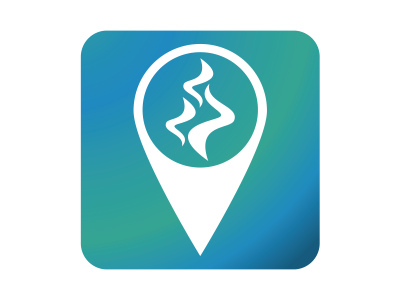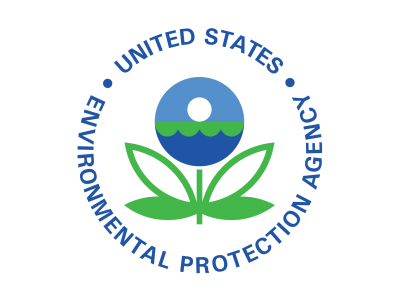Smoke & Public Health
California has experienced some of the most destructive wildfire seasons in recent years. Large wildfires often produce intense smoke that can pose serious health risks. There are several steps you can take now to keep your family safe before and during wildfire season.
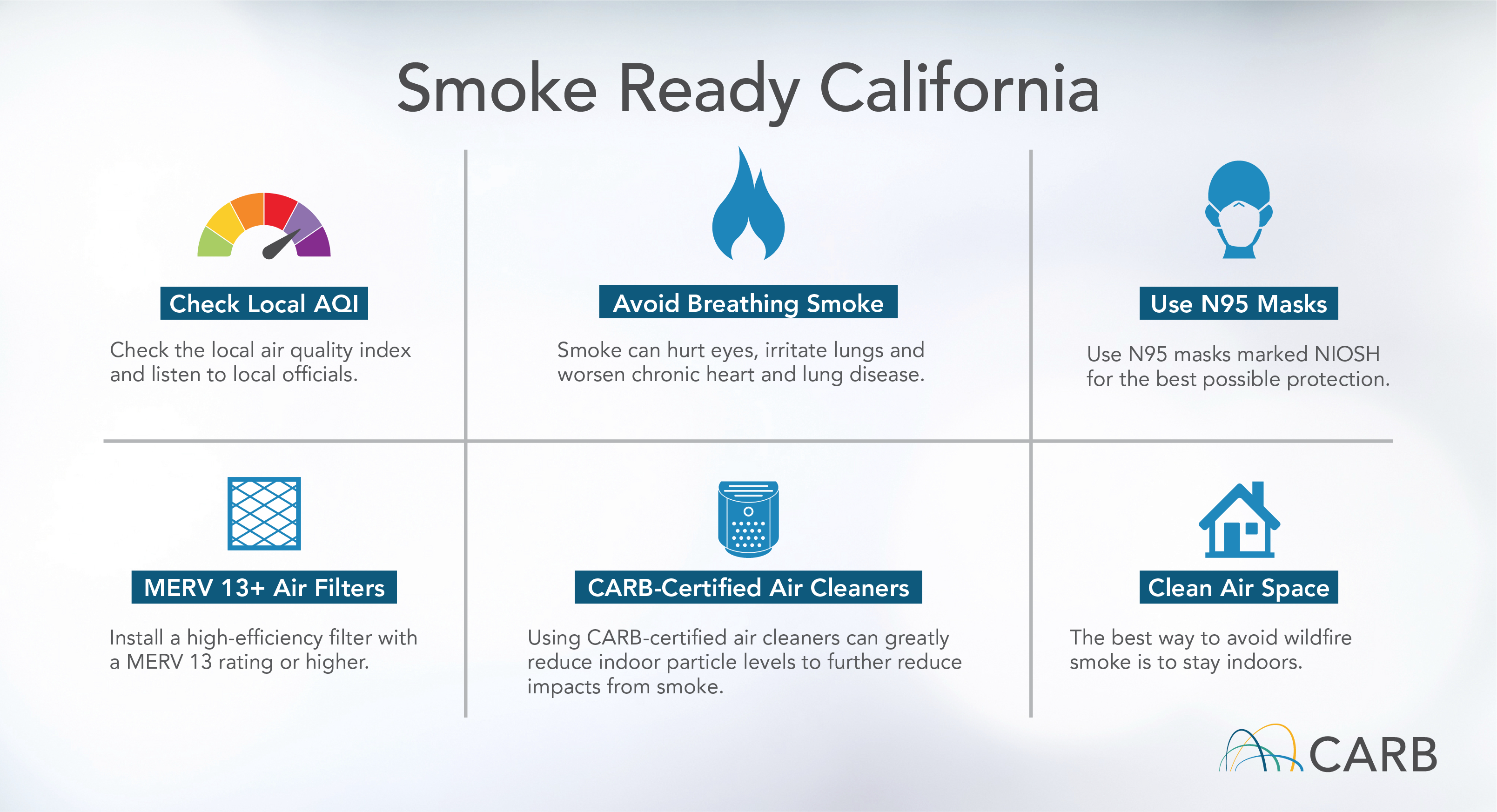
Air Quality Guide for Particle Pollution
For the latest information on air quality and smoke near you:
• Download California Smoke Spotter.
• Visit U.S. EPA’s AirNow Fire and Smoke Map.
• Check with your air district for local information.
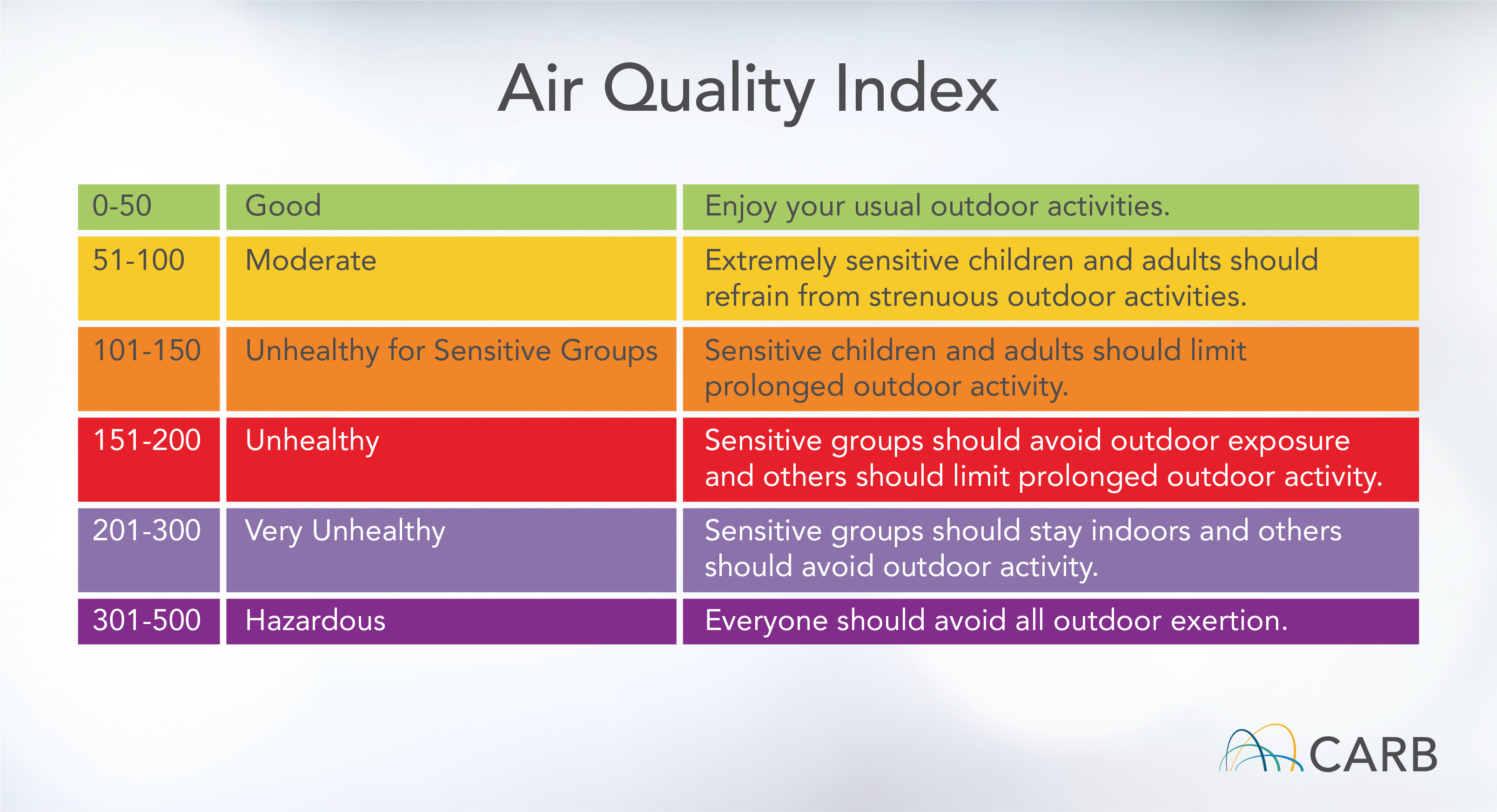
Particulate Matter
Wildfires produce a range of harmful air pollutants, from cancer-causing substances to tiny particles that can aggravate existing health problems and increase the risk of heart attack or stroke. Particulate matter (PM) is the main pollutant of concern from wildfire smoke for relatively short-term exposures (hours to weeks). Particles from smoke can be very small (with diameters of 2.5 micrometers and smaller). They are small enough to get deep into the lungs and the tiniest, ultrafine particles can pass directly into the bloodstream. The association between PM2.5 and heart and lung health effects is well documented in scientific literature.
Larger, more frequent and intense wildfires are a growing public health problem, contributing to reduced air quality for people living near or downwind of fire. Smoke can travel hundreds of miles, so you can be impacted even if you’re not near an active fire. Health problems related to wildfire smoke exposure can be as mild as eye and respiratory tract irritation and as serious as worsening of heart and lung disease, including asthma, and even premature death.
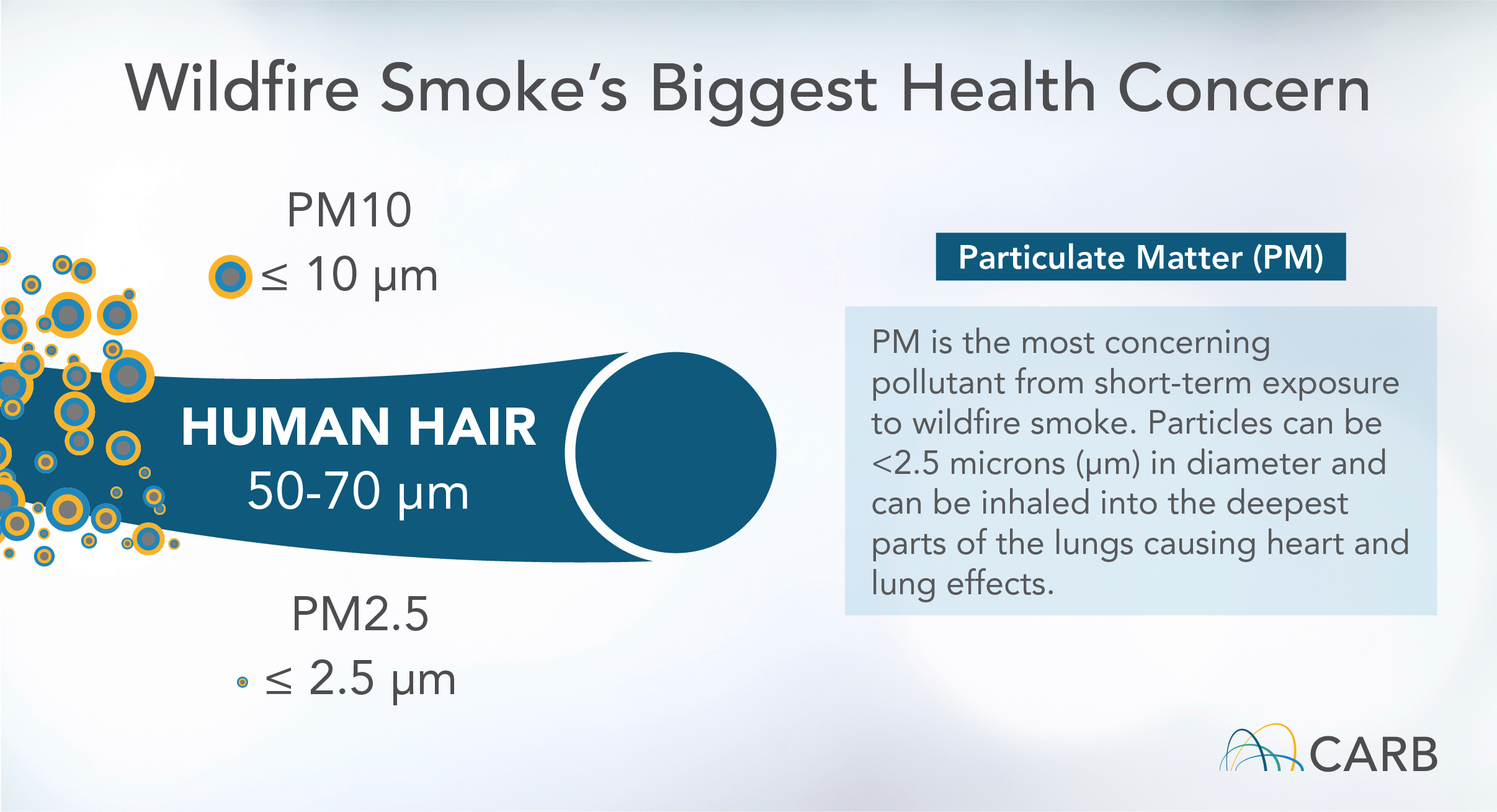
Masks
People who must be outdoors for long periods of time, in areas with heavy smoke, or where ash is disturbed, may want to wear a NIOSH-certified N95 respirator mask. Those with existing respiratory, lung or heart conditions should limit their exposure by staying indoors. Since wearing a respirator can make it harder to breathe, those with lung or heart conditions should check with their doctor before using one.
If you purchase N95 masks, make sure they are NIOSH-approved. Choose a size and model that fits your face and has no gaps. Test it by doing a seal check.
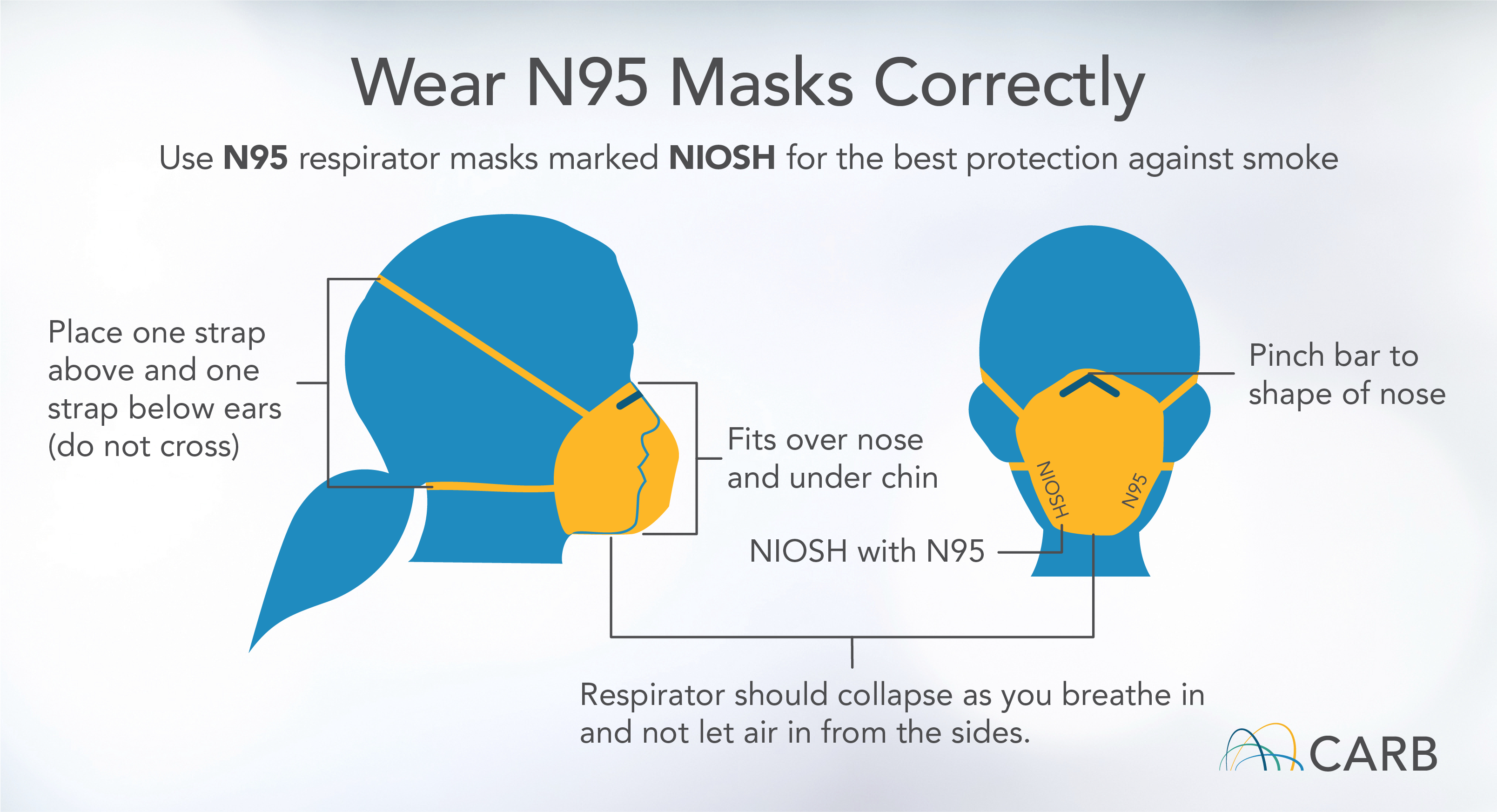
Some respirator masks are designed and tested to meet international standards, rather than U.S. standards (NIOSH certification). KN95 respirators are the most widely available masks that meet an international standard.
If you choose to use a KN95 mask, the California Department of Public Health (CDPH) recommends using one that has been tested by NIOSH and has a minimum "filtration efficiency" of 95% or higher. However, it is important to know that while some KN95 models have been tested by NIOSH, they are not designed or approved in accordance with NIOSH standards.
Almost all KN95s have ear loops, which provide a less-snug fit than respirators with head straps (such as N95s), so it can be difficult to create the seal needed to adequately filter smoke particles.
Additional Resources
- CDPH: Get the Most out of Masking – Different types of masks and when to use them
- Cal/OSHA: Worker Safety and Health in Wildfire Regions
- CDC: NIOSH-Approved Particulate Filtering Facepiece Respirators
Protecting Yourself from Smoke
Stay Indoors and Keep Indoor Air Clean
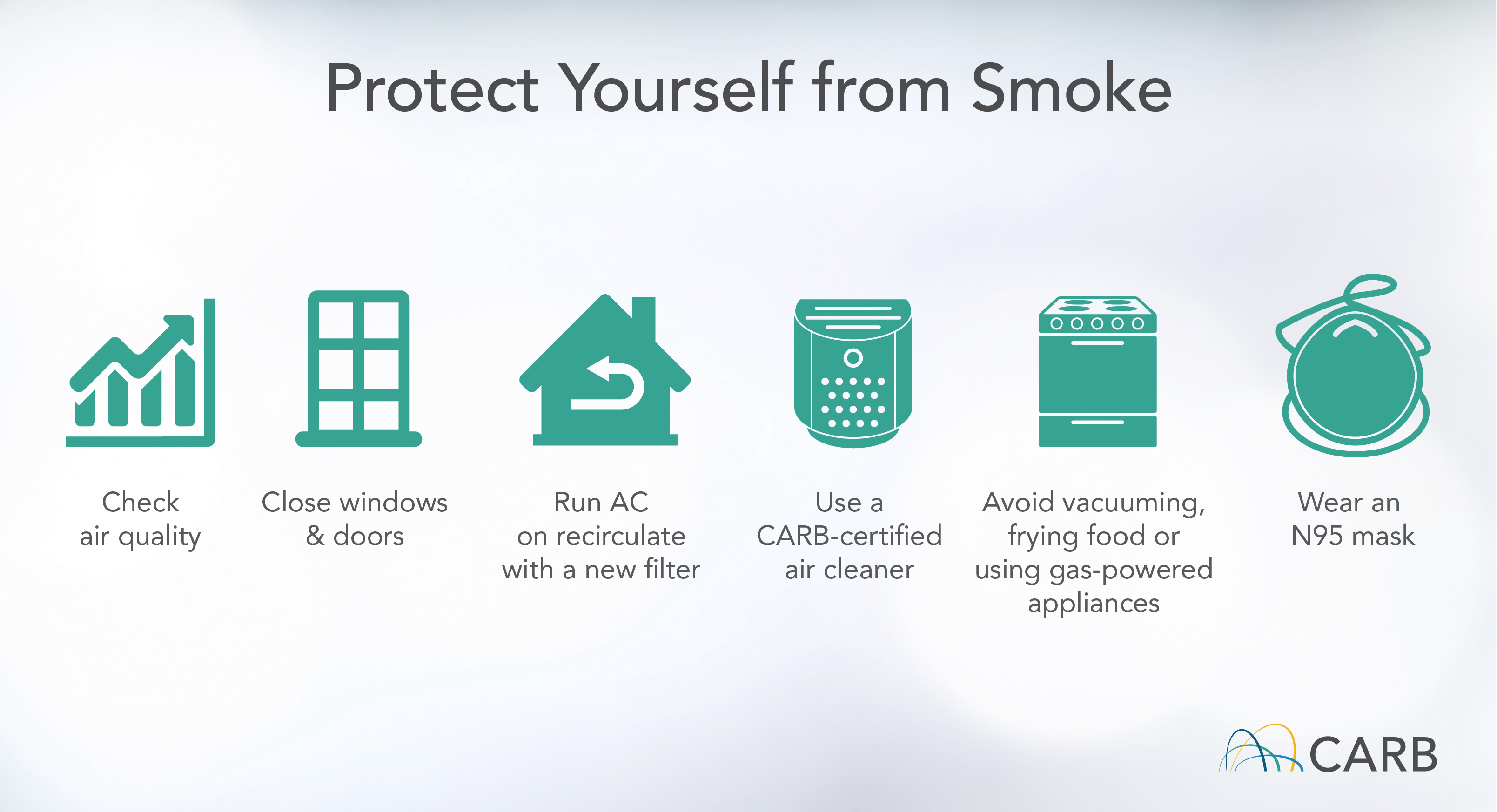
The best way to prevent breathing harmful particles in wildfire smoke is to stay indoors.
- When air quality reaches dangerous levels due to wildfire smoke, the most effective way to reduce exposure and avoid health effects of smoke is to stay indoors with windows and doors closed.
- If you have a central-ducted air conditioning and heating system, be sure to set the system to “on” to ensure air is being filtered constantly, rather than “auto,” which runs the system intermittently.*
- If your system brings fresh air into the home, close the fresh-air intake so that it operates in in recirculation mode to prevent outdoor smoke from getting inside.
- Install a high-efficiency filter (MERV 13 rating or higher) with a MERV rating as high as your system can handle, based on manufacturer recommendations.
- Consider using a CARB-certified air cleaner which can greatly reduce indoor particle levels to further reduce impacts from smoke.
- Do not run swamp coolers or whole house fans.
- Avoid activities that increase indoor pollution, such as burning candles, using gas stoves and vacuuming.
*In the event of a Flex Alert – a call for consumers to voluntarily conserve electricity when there is a predicted shortage of energy supply, often during heat waves which coincide with wildfire season – follow all guidance from California ISO.
Use these tips to create a Cleaner Air Space within your home. By focusing on one room or area, cleaning the air becomes more manageable and everyone has a safe place to be during periods of intense wildfire smoke.
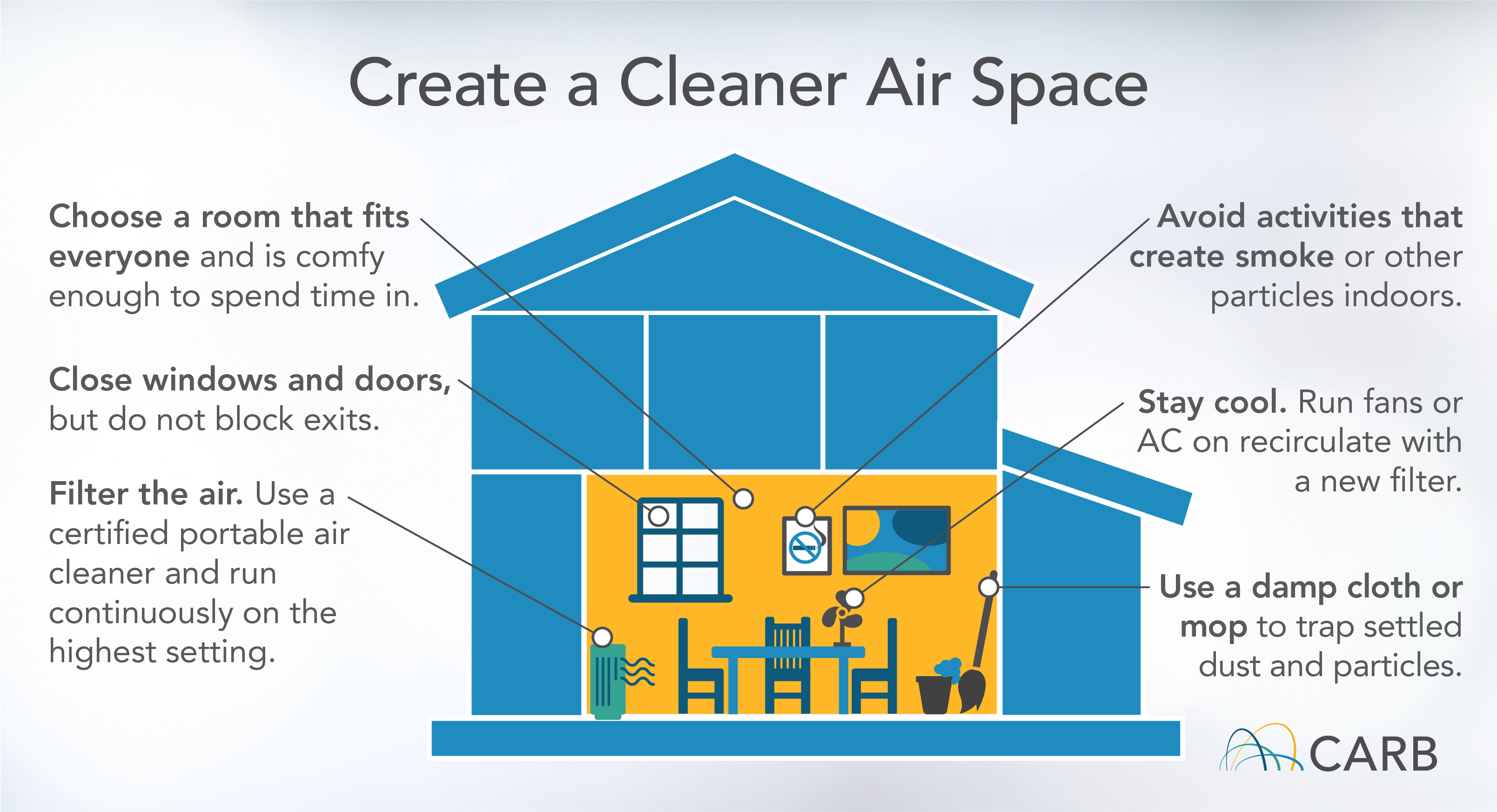
Construct a DIY Air Cleaner
If you don’t have central air or a portable air cleaner to reduce smoke inside your home, another alternative is a do-it-yourself (DIY) air cleaner. These are made with a box fan and MERV 13 air filters.
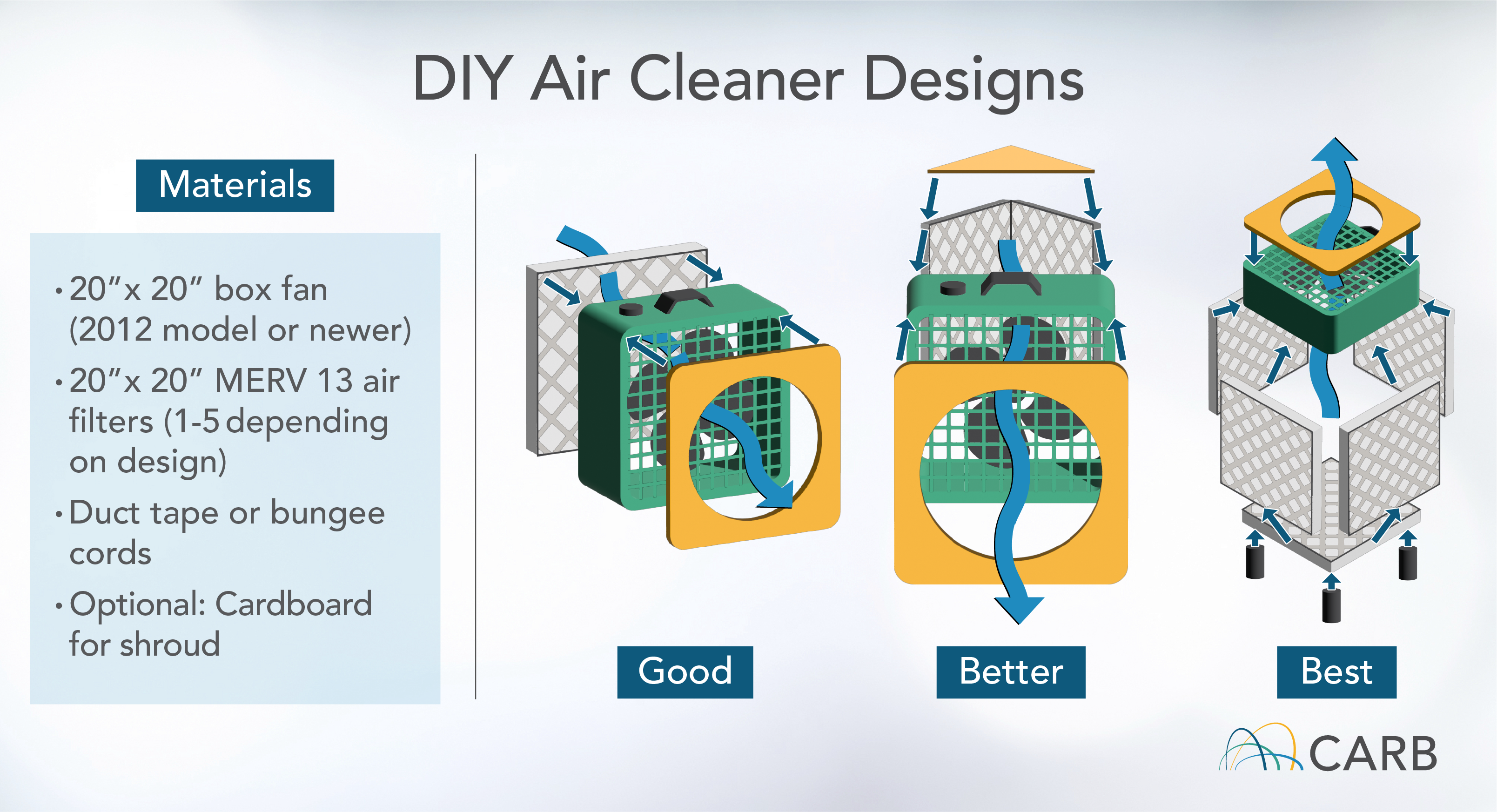
The graphic above shows three popular designs for DIY air cleaners. U.S. EPA researchers tested these designs and found all three are effective at reducing smoke particles. While the cost, supplies and construction of each design are different, there are some important things to keep in mind for all designs:
- Only use certified box fans marked UL or ETL (2012 model or newer). These have safety features to prevent overheating or an electrical fire if the device is knocked over.
- Use filters rated MERV 13 or higher. These provide the best filtration.
- Whenever possible, filters should be mounted to the back of the fan with the arrow printed on the filter pointing toward the fan (in the same direction as the airflow). Avoid using fans that have motor housings or power cords on the back that will keep a filter from fitting tightly against the back of the fan with no gaps.
- Replace filters when they are dirty or develop an odor. U.S. EPA’s research found that DIY air cleaners were almost completely ineffective with dirty filters.
- Keep extra filters on hand so you don’t have to go out during a smoke event for replacements.
Ways to improve effectiveness
- Add a carboard shroud, as seen in the designs above.
- Use thicker filters (4-inch, rather than 1-inch MERV 13 filters)
While all three models represented here will clean the air in your home, EPA’s research shows that models with more filters are more effective at removing smoke particles from the air.
| Design | Smoke Filtration | Supplies Needed | Average Cost of Materials* |
|---|---|---|---|
Basic (1 filter) | Good |
| $45 |
Wedge (2 filters) | Better |
| $55 |
Corsi-Rosenthal Box (4-5 filters) | Best |
| $75 |
*Prices obtained for U.S. EPA research from national retailers in April 2022; filter unit price derived from a pack of six filters (See study Section 3.2, Table 2)
Instructional Videos
- Basic design (Climate Smart Missoula)
- Corsi-Rosenthal Box (UC Davis)
Clean Air Centers
If cleaning the air inside your home is not possible, contact your local Air Pollution Control District or local officials to see if a designated Clean Air Center is open in your community. This could be a recreation center, library, school gymnasium, or other indoor facility equipped with proper ventilation and air conditioning that is open to the public during smoke events.
Avoid outdoor activities
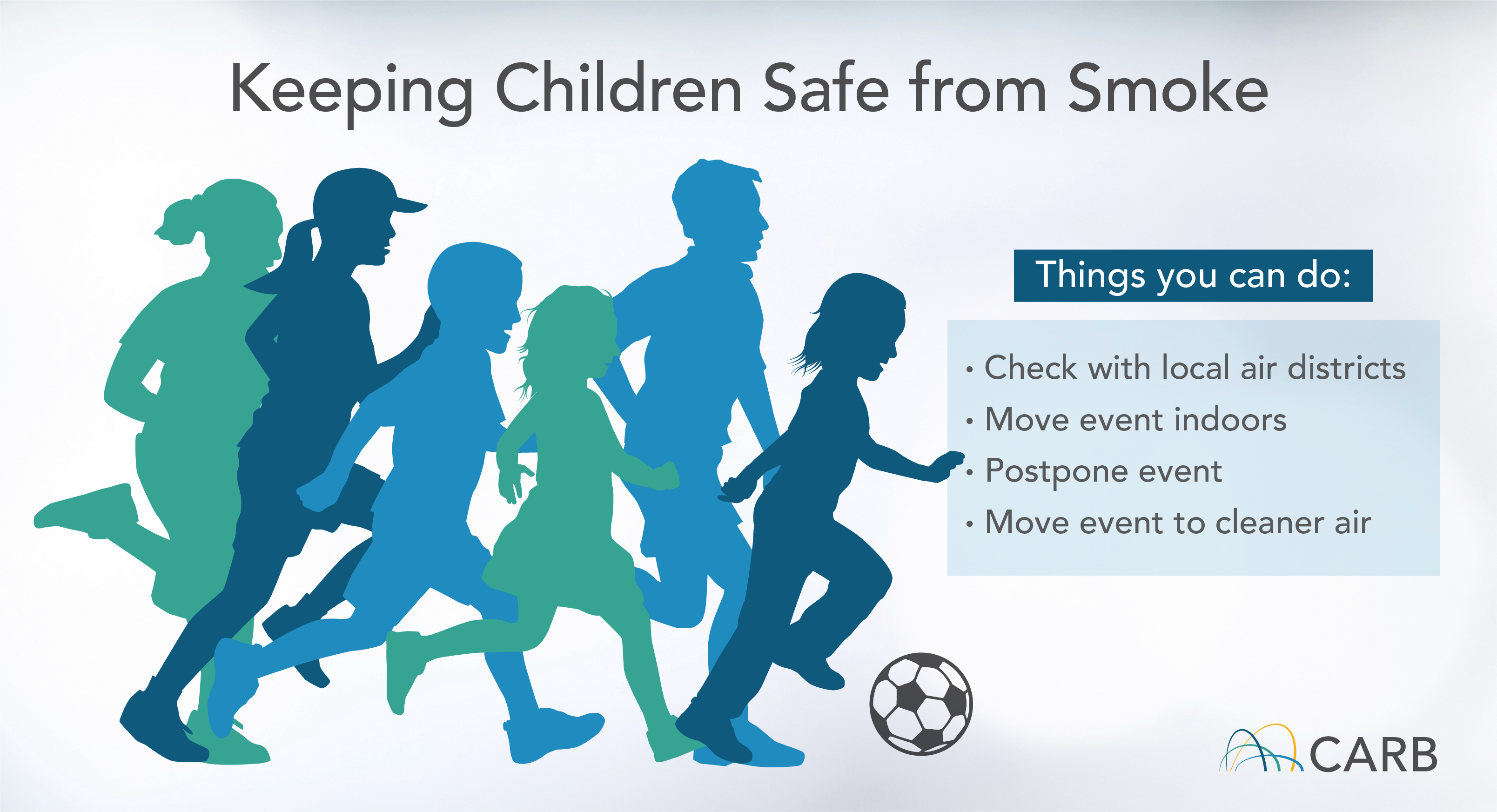
- People should avoid exercising outdoors during smoky conditions. Exposure and the resulting health effects depend on the amount of time spent outside, level of exertion, level of air pollution, and possible existing health conditions.
- Consider eliminating outdoor activities altogether when the AQI reaches unhealthy levels.
- Officials may call for an evacuation in emergency situations or when the AQI reaches hazardous levels. Always follow evacuation orders. In the event of an evacuation, make sure to operate your vehicle with the windows rolled up and the air conditioner set to recirculate.
Evacuation Smoke Safety
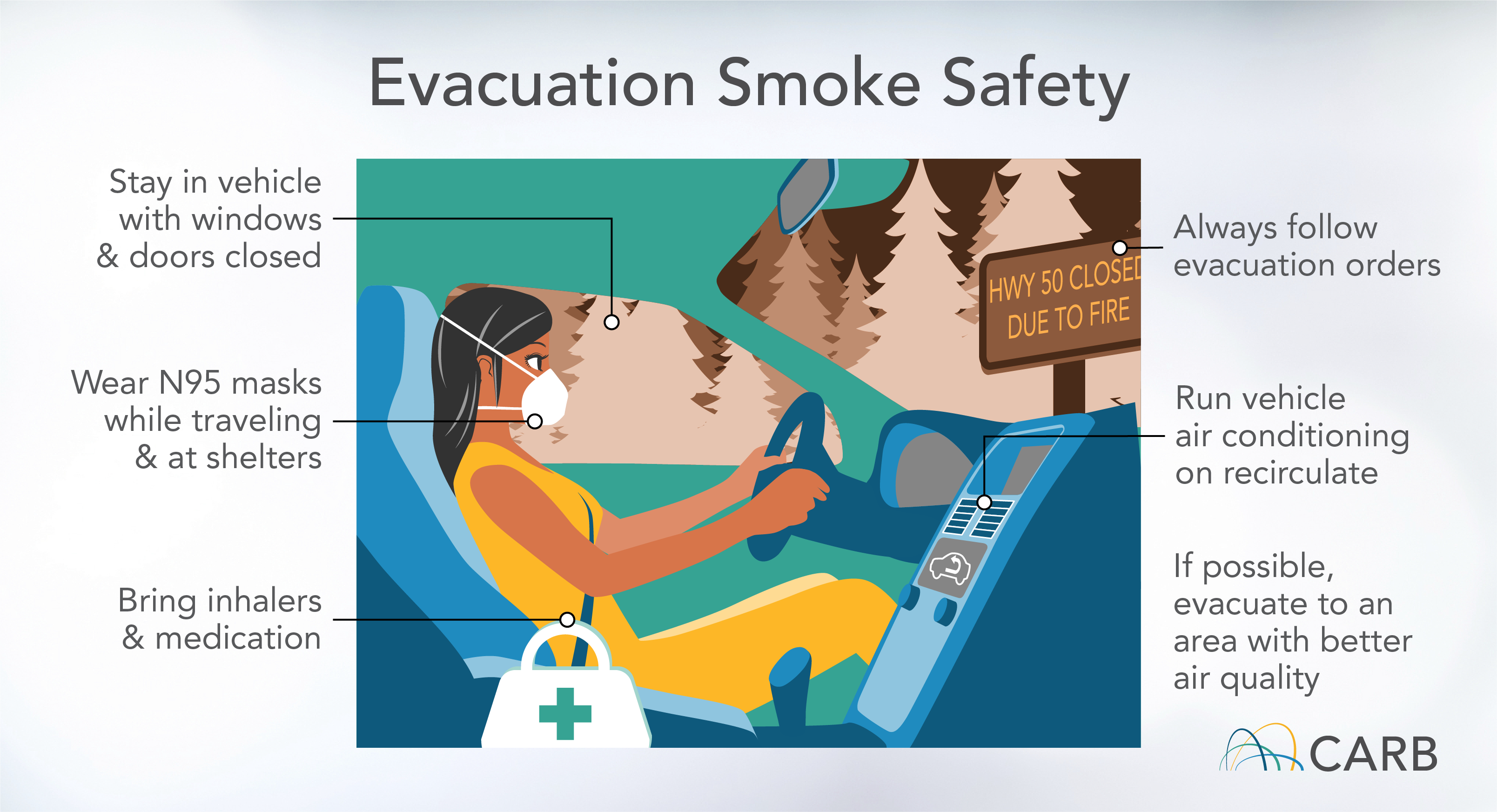
It’s easy to forget about smoke when evacuating from wildfires. There are several easy ways to protect yourself when traveling to an area with better air quality.
- Stay inside your vehicle with windows and doors closed.
- Run the air conditioning with Recirculate turned on.
- Wear an N95 mask in your vehicle and at shelters.
- For those with asthma or respiratory conditions, bring inhalers and medication.
- Try to evacuate to an area with better air quality.
- Always follow evacuation orders.


